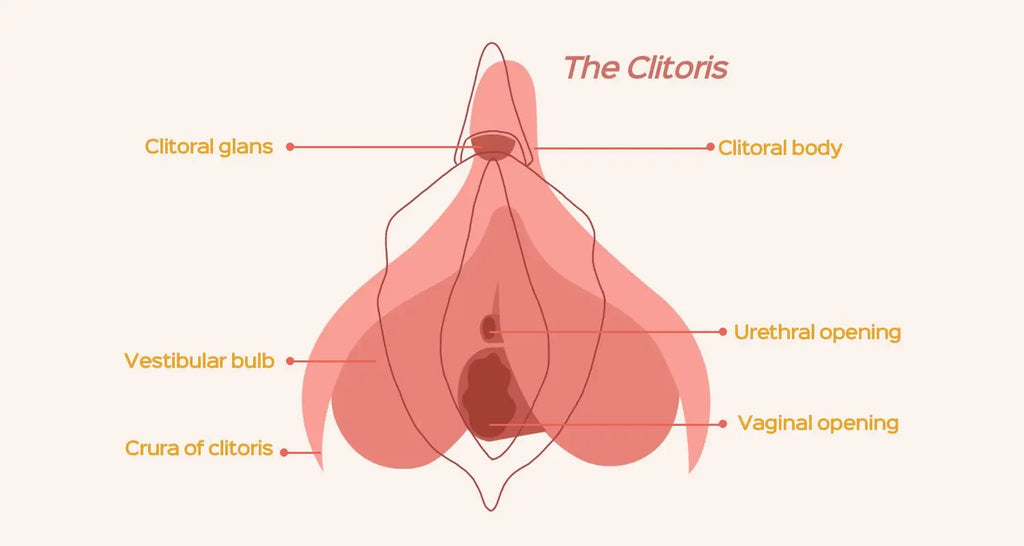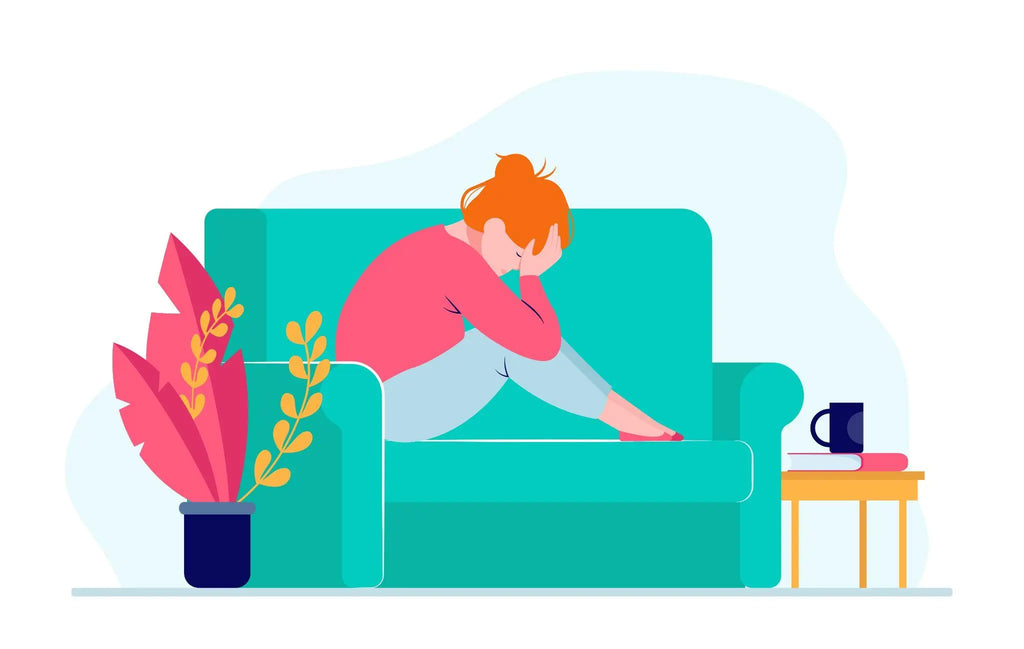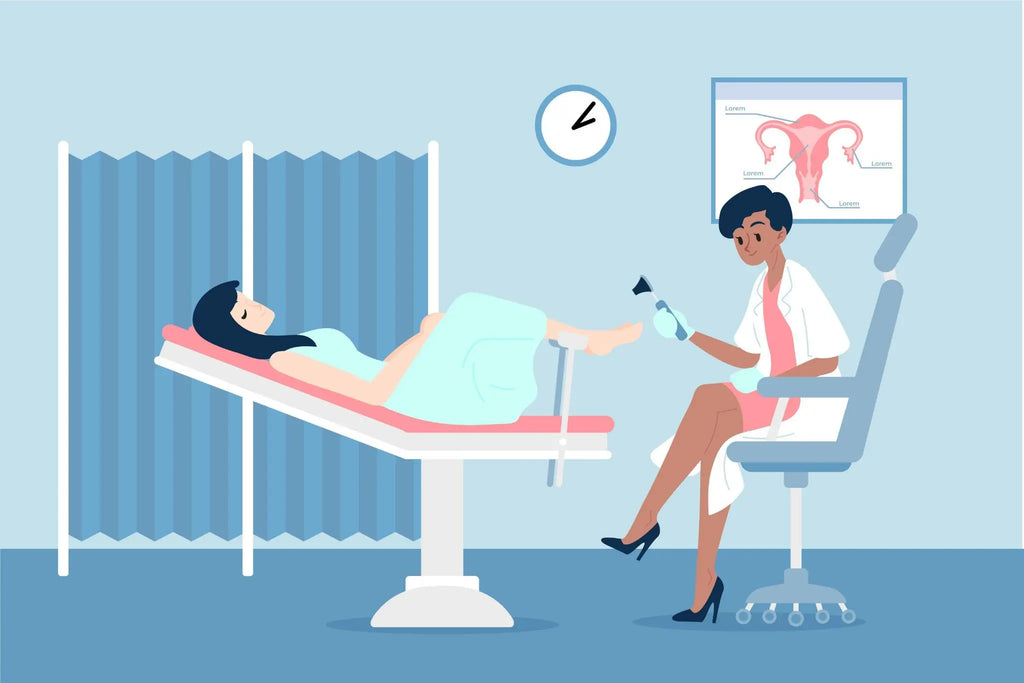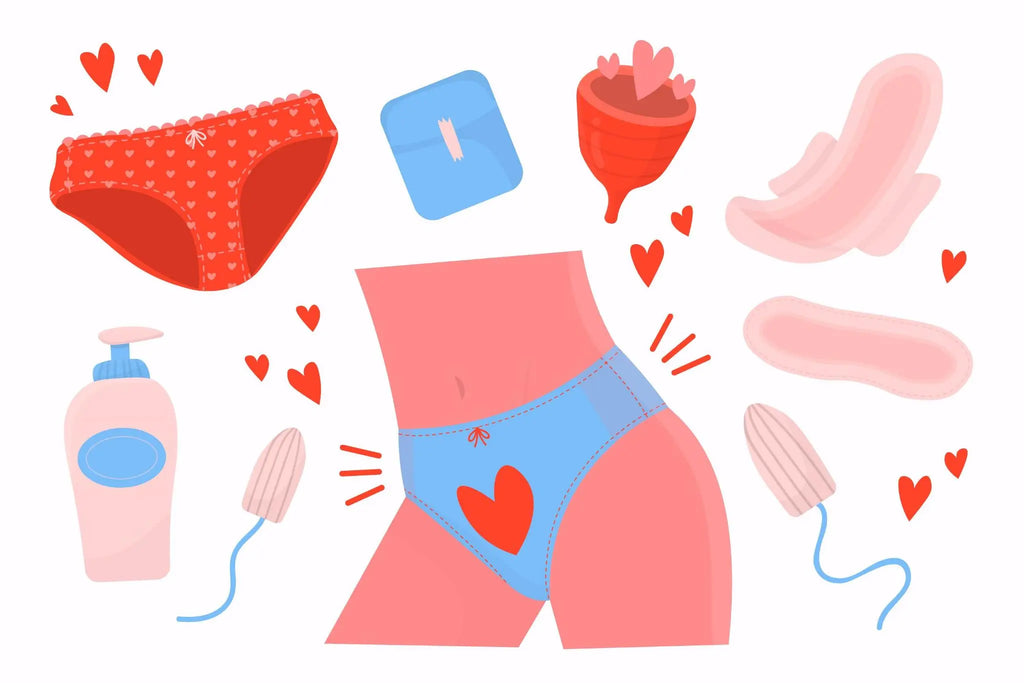Clitoral pain, a multifaceted aspect of sexual health, requires a deep understanding and open dialogue. It is a topic often shrouded in silence, yet its impact on an individual's well-being is undeniable. The clitoris, with its intricate anatomy and central role in sexual pleasure, can be vulnerable to various factors that contribute to discomfort and pain.
In this comprehensive guide, we will delve deeper into the anatomy of the clitoris, exploring its complexity and sensitivity. Understanding the intricate structures and nerve endings can provide a foundation for addressing and managing clitoral pain. We'll investigate the diverse causes of clitoral pain, ranging from infections to psychological factors, shedding light on the interconnected nature of physical and mental well-being.
Furthermore, we will examine the potential psychological aspects associated with clitoral pain, recognizing the importance of addressing emotional factors. Psychological well-being plays a significant role in sexual health, and acknowledging and addressing any emotional contributors is essential for a holistic approach.
The guide will also explore medical and therapeutic interventions available for managing clitoral pain, providing insights into potential treatments and professional support. From medical examinations to physical therapy, individuals can explore various avenues to find the most suitable interventions for their unique situations.
Practical strategies for addressing and managing clitoral pain will be discussed, encompassing lifestyle adjustments, self-care practices, and communication techniques with sexual partners. Recognizing the interconnectedness of physical, psychological, and relational aspects is crucial for developing a comprehensive approach to improving sexual well-being.
By fostering open dialogue, understanding the anatomy, exploring diverse causes, addressing psychological aspects, and providing practical strategies, this guide aims to empower individuals to navigate the complexities of clitoral pain with knowledge and confidence. Breaking the silence surrounding this issue is the first step towards promoting a healthier and more informed approach to sexual health.
Anatomy of the Clitoris

Understanding the anatomy of the clitoris is essential to comprehend the complexities of clitoral pain fully. According to Planned Parenthood, the clitoris is a small, erectile organ located at the top of the vulva, with its visible part known as the glans. Comprising thousands of nerve endings, the clitoris is a primary source of sexual pleasure for individuals assigned female at birth.
The clitoris extends internally, with legs that surround the vaginal canal. Despite its small size, the clitoris plays a crucial role in sexual response, and any discomfort or pain in this area can have a significant impact on sexual well-being.
Common Causes of Clitoral Pain
According to the Cleveland Clinic, clitoral pain refers to discomfort or pain experienced in the clitoral region. There are several causes to this, based on the same aforementioned article:
-
Infections:
Infections, such as yeast infections or sexually transmitted infections (STIs), can result in clitoral pain. Inflammation and irritation in the genital area can lead to discomfort, making it essential to identify and treat the underlying infection promptly. Regular STI screenings and prompt treatment of infections are crucial for maintaining genital health.
-
Trauma or Injury:
Physical trauma or injury to the clitoris is another common cause of pain. This can occur through accidental injury or during sexual activity when there is excessive friction, pressure, or rough handling. Ensuring gentle and considerate sexual practices can help prevent such injuries. Communication with a partner about comfort levels and preferences is key to preventing inadvertent trauma during intimate moments.
-
Allergies or Irritants:
Some individuals may be sensitive to certain products, such as soaps, detergents, or fabrics. Contact with these allergens or irritants can lead to irritation and clitoral pain. Choosing hypoallergenic and fragrance-free products can be beneficial for those with sensitive skin. Additionally, experimenting with different brands and types of personal care products can help identify and avoid potential irritants.
-
Hormonal Changes:
Fluctuations in hormones, particularly during menstruation, pregnancy, or menopause, can contribute to clitoral pain. Hormonal imbalances can affect the sensitivity of the clitoris and surrounding tissues, emphasizing the need for comprehensive hormonal management. Seeking guidance from a healthcare professional, such as an endocrinologist or gynecologist, can assist in managing hormonal fluctuations effectively.
-
Neurological Conditions:
Certain neurological conditions, such as neuropathy, can impact nerve function, leading to pain or discomfort in the clitoral area. Understanding and addressing the underlying neurological issues are crucial for effective management. Neurological consultations and diagnostic tests may be necessary to identify and treat these conditions.
Psychological Factors

-
Stress and Anxiety:
Mental health has a significant impact on sexual well-being. Stress and anxiety can manifest physically, affecting blood flow and arousal, potentially leading to clitoral pain. Incorporating stress management techniques into daily life, such as meditation and relaxation exercises, can contribute to overall sexual health. Moreover, seeking support from mental health professionals, such as therapists or counselors, can provide coping strategies and tools to manage stress effectively.
-
Past Trauma or Abuse:
Individuals who have experienced sexual trauma or abuse may associate sexual activity with pain, leading to clitoral discomfort. Addressing past trauma through therapeutic interventions, such as trauma-focused therapy or counseling, is crucial for overcoming these associations. Creating a safe and trusting environment with a mental health professional can facilitate healing and promote a positive relationship with one's sexuality.
Seeking Professional Help

-
Medical Examination:
When experiencing persistent clitoral pain, seeking professional medical advice is paramount. A thorough examination by a healthcare professional can help identify the underlying cause, whether it be an infection, injury, or hormonal imbalance. This may involve a pelvic examination, laboratory tests, and imaging studies to obtain a comprehensive understanding of the issue.
-
Gynecological Consultation:
Gynecologists specialize in reproductive and sexual health and can provide valuable insights into clitoral pain. They may recommend further tests or treatments based on the specific circumstances, ensuring a holistic approach to sexual health. Gynecological consultations can also address broader reproductive health concerns, providing a comprehensive overview of an individual's well-being.
-
Urological Evaluation:
In some cases, clitoral pain may be associated with urinary issues or disorders. Consulting with a urologist can help rule out or address any urological factors contributing to the pain. This interdisciplinary approach ensures that all potential contributors to clitoral pain are thoroughly evaluated.
-
Pain Management Specialists:
For individuals with chronic or severe clitoral pain, consultation with a pain management specialist may be beneficial. These specialists can offer a range of interventions, including medications, physical therapy, and procedural interventions, to alleviate pain and improve overall quality of life.
-
Therapeutic Support:
In cases where psychological factors contribute to clitoral pain, seeking the help of a therapist or counselor can be beneficial. Addressing emotional well-being is an integral part of holistic sexual health, and therapy can provide tools to cope with past trauma and improve sexual experiences. Therapeutic modalities, such as cognitive-behavioral therapy (CBT) or dialectical behavior therapy (DBT), can be tailored to address individual needs and concerns.
Home Remedies and Self-Care

-
Hygiene Practices:
Maintaining good genital hygiene is essential for preventing infections and irritations that may lead to clitoral pain. Using mild, fragrance-free soaps and avoiding harsh chemicals in the genital area can promote overall genital health. Additionally, practicing good hygiene includes changing out of wet or sweaty clothing promptly and avoiding tight or restrictive undergarments.
-
Warm Compress:
Applying a warm compress to the affected area can help alleviate pain and reduce inflammation. This simple home remedy can provide relief for individuals experiencing discomfort in the clitoral region. A warm compress can be created using a clean cloth soaked in warm water, applied gently to the area for 10-15 minutes.
-
Cotton Underwear:
Choosing breathable, cotton underwear can minimize irritation and promote good air circulation, reducing the risk of chafing and discomfort in the genital area. Cotton is a natural, hypoallergenic fabric that allows for proper ventilation, preventing moisture buildup and potential irritation.
-
Water-Based Lubricants:
For individuals experiencing discomfort during sexual activity, using water-based lubricants can reduce friction and enhance comfort. This is particularly important for those with sensitivities or dryness that may contribute to clitoral pain. Water-based lubricants are compatible with various sexual activities and are less likely to cause irritation.
Lifestyle Modifications

-
Stress Management:
Incorporating stress-reducing practices into daily life is crucial for overall well-being, particularly when addressing concerns like clitoral pain. Mindfulness meditation, with resources like the Headspace or Calm apps, can guide individuals in managing stress and promoting a positive mental state.
Yoga, especially gentle poses that focus on pelvic floor relaxation, may offer relief from tension. Deep breathing exercises, such as diaphragmatic breathing, can be incorporated into daily routines to help manage stress and alleviate discomfort.
Engaging in regular physical activity, such as walking or jogging, not only contributes to stress reduction but also enhances overall mental and physical health. Prioritizing these stress management techniques alongside communication and self-care practices can create a holistic approach to addressing clitoral pain and promoting well-being.
-
Communication with Partner:
Open communication with a sexual partner about concerns and experiences is essential. Utilizing active listening techniques, such as paraphrasing and summarizing, can ensure that both partners feel heard and understood.
Creating a safe space for open dialogue involves expressing thoughts and feelings with honesty and empathy. Using "I" statements, such as "I feel" or "I need," can help convey personal experiences without placing blame. Couples may benefit from scheduling regular check-ins to discuss their sexual relationship openly and address any concerns.
Collaborative communication involves working together to explore new ways to enhance intimacy, whether through trying new activities, expressing desires, or sharing fantasies. Prioritizing each other's well-being and showing mutual respect strengthens the emotional connection, contributing to a more comfortable and enjoyable sexual environment for both partners.
-
Exploration of Sexual Preferences:
Exploring and understanding one's own sexual preferences can contribute to a positive sexual experience. Communicating desires and boundaries with a partner can help create a mutually satisfying and comfortable environment. Experimenting with different forms of intimacy and communication can lead to a deeper connection and increased satisfaction.
In the journey of discovering new forms of intimacy, this article about exploring different positions for people who experience pain in sex might be a good start!
Just in case there is still hesitation in engaging in sex, then mapping out the female erogenous zones might be a good alternative.
-
Educational Resources:
Accessing educational resources on sexual health, anatomy, and pleasure can empower individuals to understand their bodies better. Reading reputable books, such as "Come as You Are" by Emily Nagoski or "The Vagina Bible" by Dr. Jen Gunter, can provide valuable insights into sexual well-being. Additionally, informative articles on platforms like Planned Parenthood or the American Sexual Health Association website offer reliable information on various aspects of sexual health. Attending educational workshops, whether in-person or online, can also be beneficial.
One noteworthy resource that combines education and pleasure is the HoneyPlay Box, a subscription service that curates products to enhance intimacy and sexual wellness. Exploring these resources can contribute to a positive and informed approach to sexual health, fostering a deeper understanding of clitoral pain and other aspects of sexual well-being.
-
Self-Care Practices:
Incorporating self-care practices into daily life is essential for overall well-being. This includes activities such as mindfulness meditation, journaling for self-reflection, and engaging in hobbies that bring joy and relaxation, such as yoga or art. Taking time for regular exercise, maintaining a balanced diet, and ensuring adequate sleep are also crucial components of self-care. Prioritizing these practices can positively impact mental health, fostering resilience and a healthier approach to sexuality. Integrating mindfulness techniques, such as deep breathing or progressive muscle relaxation, can be particularly beneficial in reducing stress and promoting a positive relationship with one's body.
By adopting these self-care practices, individuals can create a foundation for holistic well-being that extends to their sexual health and overall quality of life.
Conclusion
Clitoral pain is a complex and nuanced issue that requires a comprehensive approach, considering both physical and psychological factors. Recognizing the multifaceted nature of clitoral pain is the first step towards addressing and managing it effectively. Seeking professional guidance, practicing good hygiene, and making lifestyle adjustments can contribute to improved sexual health and overall well-being.
By fostering open communication with healthcare professionals and partners, individuals can navigate this sensitive aspect of sexual health with knowledge and confidence. Embracing a holistic approach that combines medical interventions, therapeutic support, and self-care strategies empowers individuals to reclaim control over their sexual well-being. With continued research, education, and destigmatization, the conversation surrounding clitoral pain can evolve, creating a more inclusive and understanding environment for all individuals to prioritize and enhance their sexual health.










 App juguetes
App juguetes Women
Women Los más vendidos
Los más vendidos Mujer más nuevo
Mujer más nuevo
 Pezón
Pezón
 Vibradores anales
Vibradores anales cuentas anales
cuentas anales Juguetes anales para principiantes
Juguetes anales para principiantes tapones anales
tapones anales Tapón anal de empuje
Tapón anal de empuje Lubricantes
Lubricantes Men
Men Anillos para el pene
Anillos para el pene muñecas sexuales
muñecas sexuales Couple
Couple